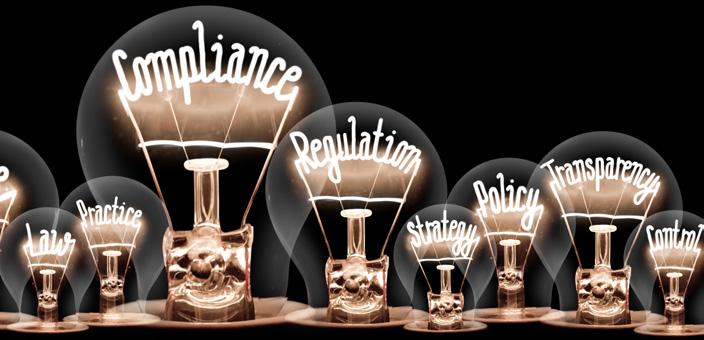
4 minute read
Perspectives on Innovation
FROM AROUND THE SECTOR
“For the most part electrical distribution was not very innovative for decades. Over the past few years innovation has accelerated at a rapid pace. Moving forward, distribution companies will have to understand that customers and businesses want more control and options on how they obtain and consume electricity. Innovation as with any other entrepreneurial enterprise is interesting because at times it is great to be the first to market but at other times it is best to let mistakes be made, the dust settle and then move forward with what has been learned. The value of the EDA is that we can partner and work together sharing knowledge, ideas, successes and mistakes.” – Chris Litschko, CEO Lakeland Holding Ltd. “The rules of engagement for employees continue to shift. Remote working approaches have been implemented but effective communication between teams remains a challenge. This situation makes asset management a key area of focus due to the required interaction between regulatory planners, field inspectors, engineering designers, and project teams. We needed a transition plan to empower the remote workforce across Oakville Hydro. And we accomplished this by embracing digitization and cross-platform integration to generate data-driven insights.” – Jeff Mocha Vice President, Enterprise Innovation Oakville Hydro
Advertisement
“We will plan, design and build a grid to meet the future needs of the customers, businesses and communities of Ontario. These investments are increasingly important as we prepare for more severe storms and the effects of climate change. Whether it be through our distribution modernization program, our new distributed energy resource management system, our new approach to vegetation management or our battery energy storage system pilot, Hydro One is working to meet customer needs by building a more resilient and environmentally sustainable grid.” – Lyla Garzouzi Vice President of Distribution Hydro One “Councils and other EDA forums, and our partnership in the GridSmartCity Cooperative, are helping us to bridge the need for innovation and infrastructure renewal, while reaping the benefits of collaboration and cost efficiencies. By sharing resources, insights and systems we are not only able to engage in more encompassing and innovative pilot projects, it’s enabling us to run smarter companies. It’s allowed Burlington Hydro to remain autonomous, yet achieve the same large scale savings as merged entities. A great example is our collaboration with fellow LDC member Energy+ and corporate partner S&C Electric to model how distribution feeders will operate with distributed energy resources grouped at various points and spread out along the feeder.” – Gerry Smallegange President and CEO Burlington Hydro
“Innovation often begins with a casual conversation – with a customer, a co-worker, a supplier, a colleague, a student, a board member, a perfect stranger. ‘What if…’ ‘Why couldn’t we… ’ ‘Have you ever tried…’ Sometimes, that’s as far as it goes, but in the right environment, with a supportive culture and inspired leadership, it moves beyond a conversation and into a serious discussion. As leaders, we need to allow these conversations to take place and see where they go, even if we think they are headed down a road we already explored five years ago and found it to be a dead end. Because that was five years ago, and a lot can change in five years.” – Jac Vanderbaan, P.Eng., CPA, CMA Director of Engineering, London Hydro “Innovation takes patience and determination – because the process itself is messy, convoluted and anything but straightforward. It takes radical thinking, decisive action and strong governance that supports calculated risk-taking. The distribution sector’s DNA is built upon being risk averse, with reliability and safety at its core. This is not bad, but we need to evolve to accommodate fresh thinking. We need to be ready to get out of our comfort zone, to test and fail fast. We need to innovate with intention, in an open and creative environment that expands our scope beyond the bounds of the traditional utility business model.” – Neetika Sathe Vice President, Alectra’s GRE&T Centre
“Utilities need a proactive approach that embraces, unlocks, and harnesses the endless advancements in technology. Utilities aren’t alone in this however; we need help from our partners. Flexibility and openness of the regulator is critical to ensure barriers are removed and new ideas and approaches are considered. Access to government funding is also important as the cost of new technology can be very prohibitive. Through collaboration among all players, and alignment of end goals, the customer wins. Utilities must take every opportunity to leverage technology now. If we don’t, our communities and customers will find alternate solutions to their energy needs, leaving utilities in the dark.” – Matt Payne President and CEO, North Bay Hydro “The energy sector is going through a major transformation driven by advanced consumer technologies, renewable energy system parity, increasing costs, aging infrastructure, climate change initiatives and electrification of transportation. The pace of change will continue to accelerate and navigating this path is better served by sharing ideas and successes and learning lessons from less optimal results. As we focus on grid modernization, it is also encouraging to see support for regulatory change and modernization as well. The government is focused on achieving environmental, economic and social sustainability, and going digital will allow for a truly analytical approach towards achieving this.” – John Avdoulos President & CEO, Essex Power Corporation








